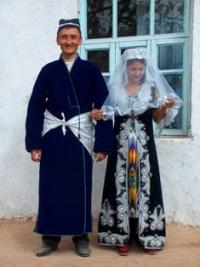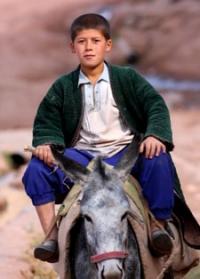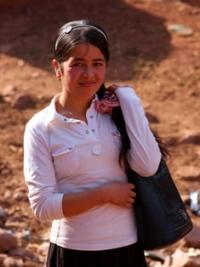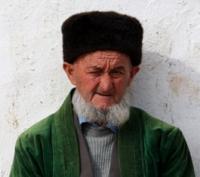You are here
Katta Langar is the abode of God.




Trips to the sights of Uzbekistan
“Don't let me go to the temple of God.
I am an atheist. So God made me.
I am like a harlot whose faith is a vice.
Happy b sinners to heaven - do not know the roads"
Omar Khayyam Giyasaddin Obul-Faht ibn Ibrahim.
Trips to interesting places in Uzbekistan.
To get to these blessed places, you have to leave bustling Tashkent and overcome some five hundred kilometers. And when the steppe is replaced by mountain peaks, and the air will become transparent, and the silence around - impossible for the city ear, consider that you are there.
Destination - foothills of Kashkadarya; It was here that five hundred years ago unique architectural structures were founded - Langar. By a happy coincidence of circumstances and by the efforts of local residents, these places of worship have been preserved to this day in their original form.
In the 15th century in Central Asia, one of the four famous Sufi brotherhoods of the Islamic world, Ishkiya, was very active. The history of Langarov, the monasteries of the Sufis, is associated precisely with this brotherhood, which found its refuge in the XVth and XVIIth centuries in Maverannahr.
The brotherhood lived in strict austerity, was indifferent to wealth and worldly goods, purely in heart and thoughts. The key idea of the Ishki brotherhood is life in the name of service and love for Allah. “Langars” are usually called architectural-burial complexes, which, according to various sources, in the territory of Uzbekistan are from seven to fourteen.
But the word “Langar” has several meanings, subordinated to a single meaning: “anchor”, “anchor of salvation”, “marina”, “shelter”, “stranger house”, “last means of salvation”, “abode of dervishes”, “last hope” . In the interpretation, accustomed in our time, the word "langar" means "the abode of God on earth."
There are many legends about the appearance of Langar. “The founder of the brotherhood of Ishki Baba had quarreled with Amir of Mecca, - both claimed to possess the true Qur'an Osman. Amir of Mecca sent Baba Ishka cholera to the family, but Baba Ishki saved his young son: he hid him together in the Qur'an in a sweeping bag, tied him to a camel, and sent him on the road.
After a time when the hump of a camel was already exhausted, he found himself on the spot where Katta Langar stands today” “One of the students of Muhammad Sadiq Sheikh reached a high level of knowledge, and the saint said:“ I have nothing more to teach you: two wise men living side by side are like two women preparing one dish.
Therefore, take a white camel and go after it. Where he “throws an anchor”, put your house there, and let other people around him put their houses and find rest and repose in new dwellings ”. The student did so. He took the white camel and went after him.
The camel went through the mountains, in places where camels do not walk. Having overcome one of the passes, he “dropped anchor” - lay down on the ground. The apprentice of the sheikh decided that a place for his dwelling had been found, but suddenly the ground under the camel opened up.
The camel rose and went on. Sheikh followed him. After some time, the white camel again “dropped anchor”, and the village was built at Langar kishlak ”... In Tashkent, the Office of Muslims of Uzbekistan stores 12 sheets of the Koran Osman (Osman Muskhaf), the so-called Katta-Langar lists, which in 1941, as the aksakals say, had 143 sheets.
This rarity was one of the sacred relics of the Ishkiy brotherhood, which founded their monasteries - two Langars in the Kashkadarya region, in the mountains near Shahrisabz. Central Asia has revealed to the Islamic world four of the most famous Sufi brotherhoods, Kubraviya, Naqshbandiya, Yasaviya and Ishki. It is the latter that we owe to the appearance of the Langars in the XVth and XVIIth centuries in the territory of Maverranahra.
Under various names, the brotherhood was known in Turkey, in India, in Iran, but in Central Asia it was named after the founder, Sheikh Abu Yazid al-Ishki, or Ishki Bab. The second sacred place, Katta Langar, was founded by Sheikh Muhammad Sadiq, who was a murid at Ishkiy Baba.
There is a legend about the reason for the separation of two sheikhs. The duty of Muhammad Sadiq was to supply water to the sheikh, for washing. Once, he could not heat it, because there was no fire, put a jug of water in his bosom and fell asleep. When he woke up, the water was boiling.
Sheikh Ishki told him that the murid had reached the highest level of enlightenment, and now he can organize his own langar. And together they in one place have nothing to do. Having given him the shrines - the Koran of Osman and the chit-rag of the Prophet, he blessed him on his way, punishing to stop where his camel will not rise from the ground for three days.
The camel stopped two times, but got up earlier than the deadline of three days. The third time the place was found. The Ishkiy Brotherhood was an offshoot of the mystical fraternity of Typhoia, and the basis of the practice was ecstatic celebrations on the way to God and special ritual dances.
The ultimate goal is the all-consuming love of God, and the traveler should not hear anything and no one on this path. Therefore, for their practices and exercises, the mystics chose distant places, where the noise of the bazaar and human conversations did not reach.
True, this did not prevent Sheikh Ishkiy from entering into religious disputes with his contemporaries, Bahauddin Naqshbandi, who believed that labor was not a hindrance to enlightenment, because Hazrat Bahauddin earned his needs exclusively with his own hands.
Sheikh Ishki was asked for intercession before God, because the mystics had a spiritual connection with the angels - they asked for a good harvest and good luck in other everyday affairs. It is still believed that the spirit of Avlyus (the saint) is able to satisfy the requests.
To this day, Sufi mystical traditions of lighting chiragdonah (special small buildings), - of course, not approved by Islam, - accompanied by folk festivals and chants, have remained. And throughout the rest of the world there are legends and rumors that there are places of fire worshipers and magicians in Uzbekistan, where amazing miracles happen.
The average age of Langar is 90 years. If this is considered a miracle, then here it is, in front of you. Moreover, there is no such thing as old age. Rather, the young period of life of the Langar people is much longer than ours.
The woman who gave birth to eight to ten children looks much younger than her urban counterpart, who gave birth to one or two, here even the ancient grandmothers are amazingly beautiful. Here you will not meet an old man, leaning on a staff and barely swallowing his legs.
Only folk medicine is at their disposal; the ambulance “leg” has not stepped here. Of course, they have electricity, but when it turns off, they, unlike us, are not helpless. All this can be attributed to surprisingly clean mountain air and ecologically clean food, but probably it’s also a special aura and character of Langarians.
They are philosophical, welcoming and friendly. They love guests very much, they rush to the cars to shake hands, greet, and be sure to invite to their home - you feel like a welcome guest. In the villages there are houses that are five hundred years old.
They were built of clay and straw, adobe houses - such buildings were built in 1966 during an earthquake in Tashkent and were demolished in just a few seconds. But here they are already half a millennium, is this not a miracle? Considering that the highlands where they are located are very mobile.
It seems that the ancients knew the principles of finding a place that would ensure the stability of a house. If you look at Langar from above, you will see that the houses are located in a certain, one Langar known, intricate order.
There is an amazing stone in Ata-Langar, and if you turn on the imagination, you can see the outlines of a reclining camel, as if it is nature that created the monument to that first Meccan one-humped camel that brought the sheikh to this holy place.
At its top there is a rock, weighing about 80 tons, but it can be easily shaken by hand. Such formations in the mountains are not uncommon - this is the intricate work of the wind and the sun, but in this rock there is a hole into which, according to legend, only a pure soul can pass.
In both Langar, time flows leisurely, and people live the simple life of the industrious people, just as their ancestors lived a hundred and two hundred years ago. They live a long time, a hundred years is quite an average age to go to another world. Possessing priceless shrines, people piously revere them and worship them, and are happy with what they own.
Authority:
http://visitkashkadarya.uz
Photos
Alexander Petrov.







